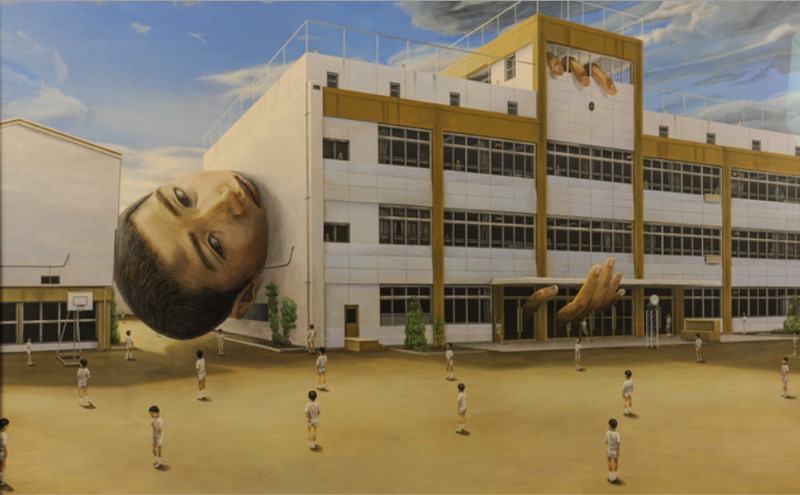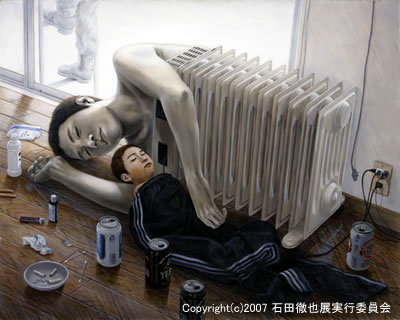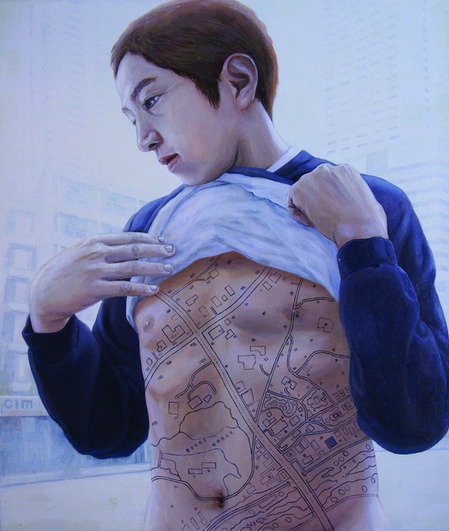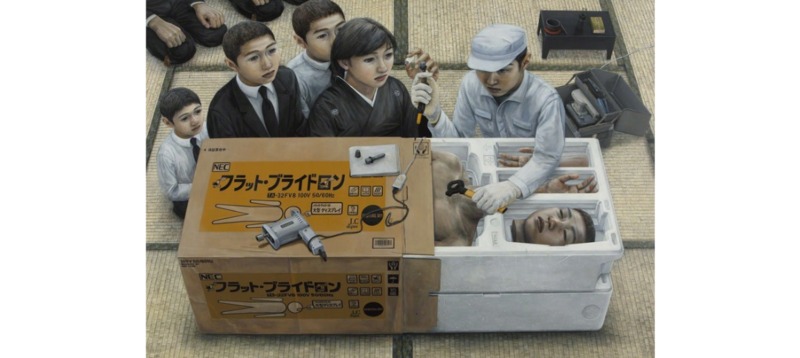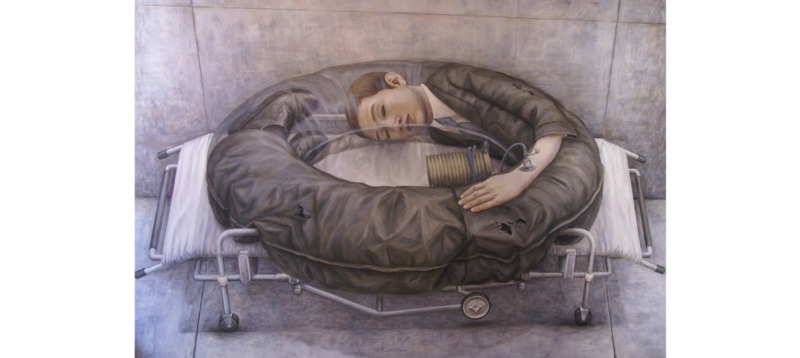Japanese Modernism Across Media
Human Body Incorporated: the Art of Tetsuya Ishida
The work of Tetsuya Ishida very much mirrors the techniques of Ydk Morimoe, but flipped: while Morimoe hid a bitterly pessimistic message under beautiful colors and patterns, Ishida's melancholy colors and mundane subject matter hide a wry sense of humor. Ishida features similar human figures (at some points proposed to be his self portrait) incorporated or interacting oddly with technology and man-made structures. The human incorporation into machinery comments on the working habits of daily Japanese life.
Isolation and solitude seem apparent at first, as groups of people seem alone even in each other's presence. Yet there is a sort of whimsy in the familiarity of the motifs, even in the dull and slightly depressing presentation.
The history of body manipulation as a form of artistic expression preceded even the surreal movement. The motif also cropped up in early woodblock prints and developed parallel to surrealism. In the following visual essay, we explore the origins and purposes of the artistic distortion of the human body and closely examine, among others, Ishida's works.
